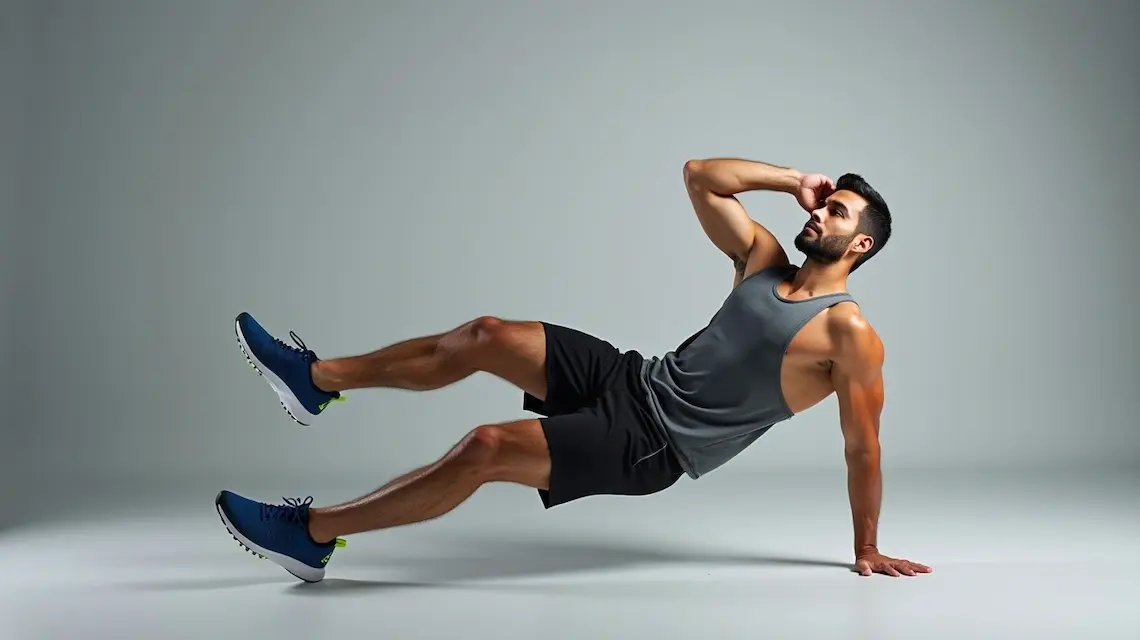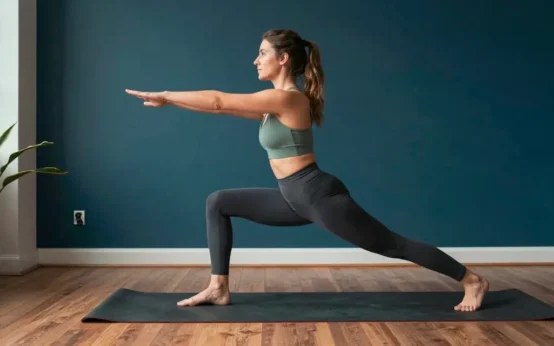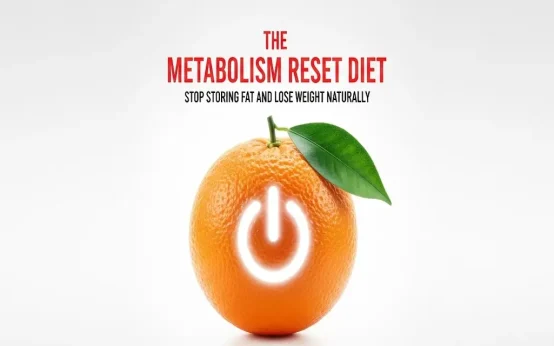You can lose belly fat with smart training and smart habits, not crazy hours of cardio. In this post, you’ll see what the Best Workout to Lose Stomach Fat really looks like, plus how a simple morning ritual before workout can lower stress and support fat loss. We’ll cover the right mix of strength, intervals, and daily movement so you get a flatter, stronger core. If you want clear steps you can follow this week, you’re in the right place.
Think of it like a team effort. Cardio raises your daily burn, strength training builds lean muscle that boosts metabolism, and core training improves posture and muscle tone. Add consistent effort, enough protein, and quality sleep, and your results stack up faster.
In this guide, you will learn the science behind belly fat and why it behaves the way it does. Get the top exercises that work in real life, not just on paper. A simple routine you can follow at home or at the gym, plus tips to stay on track when life gets busy.
See how to mix steady cardio with HIIT, how to structure weekly strength sessions, and which core moves give you the most return for your time. You will learn how to progress your plan so you keep seeing changes month after month. You will also get form cues that protect your back and help you feel your abs working.
If you are starting fresh, you will know where to begin. If you already train, you will see how to tweak your plan for better results. Either way, you will walk away with a clear, doable blueprint that trims fat and reveals stronger abs.
You do not need hours a day or fancy gear. You need the right mix of training and a plan you can stick with. Ready to build a leaner waist and feel stronger in your core? Let’s get into the details, then you can put the plan to work today.
Why You Can’t Spot Reduce Stomach Fat (And What Works Instead)
Crunches do not pull fat off your belly. Your body burns fat like a fire eats a log. The whole log burns, not just one spot. You can train a muscle group, but you cannot pick where your body releases fat first.
Two types of belly fat make the waist a stubborn area. Subcutaneous fat sits under the skin. Visceral fat sits deeper around your organs. Visceral fat raises health risk, but it also responds well to total body training and consistent cardio. That is why the best workout to lose stomach fat trains your whole body, not just your abs.
Here is the simple science. Fat loss comes from a steady energy deficit. Your body mobilizes stored fat through hormones and blood flow, then burns it during activity and at rest. Ab exercises build muscle and improve posture, but research shows ab work alone does not reduce belly fat. Studies also show that total calorie burn from cardio, HIIT, and full-body strength drives fat loss across the body, including the stomach.
What works in practice:
- Cardio for burn: 150 to 300 minutes per week of moderate cardio or 75 minutes of vigorous cardio.
- Strength for muscle: 2 to 4 total body sessions per week to raise resting burn and improve insulin sensitivity.
- HIIT for efficiency: Short intervals 1 to 3 times per week to boost calorie burn and keep muscle.
- Core work for function: 8 to 12 minutes after workouts to build a strong trunk and better posture.
Measure change with more than the scale. Use a soft tape at the navel, take photos in the same light, and track how your clothes fit. A tighter waist and better shape often show up before a big drop in weight.
The Role of Hormones and Lifestyle in Belly Fat
Stress, sleep, and daily habits signal where your body stores and burns fat. Cortisol, appetite hormones, and insulin all play a part in belly fat, especially visceral fat.
- Cortisol and stress: Chronic stress can raise cortisol. Higher cortisol is linked to more fat storage around the midsection, particularly visceral fat. You cannot remove stress, but you can train in a way that lowers stress load.
- Sleep and hunger: Poor sleep messes with ghrelin and leptin, the hormones that control hunger and fullness. Short sleep tends to increase appetite and reduce impulse control. People who sleep less often eat more and gain more fat over time.
- Insulin and activity: Strength training and walking improve insulin sensitivity. Better sensitivity helps your body use carbs for fuel, not store them.
Quick facts you can use:
- Sleeping under 7 hours most nights often leads to higher calorie intake and more belly fat over months.
- High stress levels are associated with more visceral fat, even in people with normal weight.
- Regular strength training helps reduce visceral fat, even without a large change in scale weight.
- Aerobic exercise reduces liver fat and visceral fat, which supports a smaller waist.
Workouts that calm your system help your results. Try a yoga-infused routine after a tough day. Pair slow nasal breathing with movement to lower heart rate and relax your nervous system.
Sample stress-reducing session (15 to 20 minutes):
- Box breathing, 3 minutes, inhale 4, hold 4, exhale 4, hold 4.
- Cat-cow and thread-the-needle, 2 sets of 6 each side.
- Flow circuit, 3 rounds: bodyweight squat 10, downward dog to plank 5, cobra to child’s pose 5 breaths.
- Dead bug or bird dog, 2 sets of 8 each side, slow and controlled.
- Easy walk, 5 to 10 minutes, finish with long exhales.
Tie it back to what works. Full-body training beats spot work because it raises total energy burn, recruits big muscle groups, and improves the hormones that control fuel use. Think of it as turning more burners on the stove. The more burners on, the more the whole pot simmers down. Add a few short HIIT sessions, and you spike calorie burn without long workouts. Finish with core moves, and you build the muscle that shapes your waist as the fat comes off.
Simple weekly plan that respects hormones and lifestyle:
- 2 to 3 full-body strength days, 45 to 60 minutes.
- 2 cardio days, 30 to 45 minutes, at a pace you can speak in short phrases.
- 1 HIIT day, 10 to 20 minutes of intervals.
- 1 recovery day with yoga or a long walk.
- Daily walking, 6,000 to 10,000 steps, to keep stress low and calories up.
Core finisher ideas, 8 to 12 minutes:
- Anti-rotation work: Pallof press or band holds, 3 sets of 10 to 15 seconds.
- Bracing: Plank or side plank, 3 sets of 20 to 45 seconds.
- Dynamic control: Dead bug, hollow hold, or mountain climber, 2 to 3 sets of 8 to 12.
Keep food simple and supportive without turning this into a diet lecture. Eat enough protein, add fiber, and limit liquid calories. That combo keeps hunger in check while your training plan does the heavy lifting.
Track progress with a quick routine:
- Waist at the navel, once per week, same time of day.
- Two photos, front and side, every 2 weeks.
- Strength checks, like pushups or a 1 mile walk time.
Stay patient. Your body decides where fat leaves first, but your actions decide if it leaves at all. Stick with full-body strength, steady cardio, and smart HIIT. That is the best workout to lose stomach fat and keep it off.
Top Cardio Workouts to Burn Overall Fat and Shrink Your Waist
To trim your waist, think total burn first. Cardio creates a calorie deficit, boosts your metabolism, and supports heart health. Pair it with strength and core work from the rest of this guide, and you get the best workout to lose stomach fat without wasting time.
Here is how to pick and use cardio that actually moves the needle.
- Running: High impact, high return. It burns a lot of calories in a short time and spikes your heart rate fast. Start with run-walk intervals if you are new. Try 1 minute easy jog, 2 minutes brisk walk, for 20 to 30 minutes.
- Cycling: Low impact, joint friendly, still a strong burner. Great for longer steady rides and controlled intervals. Beginners can ride 20 to 40 minutes at a pace where you can talk in short phrases.
- Swimming: Full body, zero impact. It taxes your lungs and large muscles, which raises calorie burn. Start with 20 to 30 minutes of mixed strokes with rest at the wall as needed.
- Rowing: Big pull from legs, back, and core. You get strength and cardio in one. Begin with 10 to 15 minutes at an easy pace, then build to 20 to 30 minutes.
- Brisk walking: Underrated and easy to recover from. Longer walks add up. Aim for 30 to 60 minutes most days, plus daily steps.
Aim for variety across the week. Rotate impact and intensity to keep your body fresh, prevent overuse, and stay interested. Consistency matters more than any single session.
A steady target: 150 minutes of moderate cardio per week helps with fat loss and better health. That can be five 30 minute sessions at a pace where you can speak in short phrases. If you enjoy harder efforts, you can trade some of that for vigorous minutes.
HIIT vs. Steady-State Cardio: Which is Better for Belly Fat?
Both styles burn calories and help reduce waist size when you pair them with smart eating. Use the one you can stick with, then blend the other for faster progress.
HIIT, or high intensity interval training, alternates hard pushes with recovery. It triggers a strong calorie burn during and after the workout. That afterburn is called EPOC, or excess post-exercise oxygen consumption. Your body keeps using more oxygen after you finish, which means extra calories burned while you recover.
Steady-state cardio sits at a moderate, stable pace. You can go longer, build an aerobic base, and recover faster between sessions. It is easy to repeat several times per week, which often leads to more total minutes and more total burn.
Quick comparison:
| Aspect | HIIT | Steady-State |
|---|---|---|
| Time | Short, 10 to 25 minutes | Longer, 20 to 60 minutes |
| Burn per minute | Higher | Moderate |
| Afterburn (EPOC) | More pronounced | Smaller |
| Skill demand | Higher intensity, needs pacing | Lower intensity, easier to learn |
| Stress on body | Higher, needs more recovery | Lower, easier to repeat often |
| Best for | Busy schedules, breaking plateaus | Building base, beginners, joint comfort |
Pros and cons at a glance:
- HIIT pros: Time efficient, preserves muscle, boosts VO2 max, strong afterburn.
- HIIT cons: Tough on recovery, higher injury risk if rushed, not ideal every day.
- Steady-state pros: Easy to start, low skill, great for stress relief, high weekly volume.
- Steady-state cons: Slower per-minute burn, can feel repetitive without variety.
Not sure where to begin? If you are new to exercise or coming back from a break, start with steady-state. It builds capacity, strengthens joints and tendons, and sets you up to handle intervals later. After two to four weeks, add one HIIT day.
Simple ways to use each style:
- Beginner steady-state plan
- 3 to 5 days per week.
- 20 to 40 minutes per session at RPE 5 to 6 out of 10.
- Choose walking, cycling, or swimming to reduce impact while you build endurance.
- Beginner HIIT plan
- 1 session per week to start, 10 to 20 minutes total.
- Warm up 5 minutes easy.
- Intervals: 20 seconds hard, 40 seconds easy, repeat for 20 minutes. Use a bike, rower, or run-walk sprints on a flat surface.
- Cool down 3 to 5 minutes easy.
- Effort guide: Hard should feel like RPE 8 to 9. Easy should feel like RPE 3 to 4.
- Progression tips
- Add sets slowly, no more than 10 percent per week.
- Keep at least one easy day after HIIT.
- If joints ache, swap in cycling or swimming for your hard work.
How this trims your waist:
- Cardio increases daily calorie burn, which reduces total and visceral fat over time.
- HIIT adds a metabolic punch that helps you burn more for hours after you finish.
- Steady-state keeps you consistent, which is the real driver of change.
Make your plan stick:
- Mix modes: Run one day, cycle the next, swim on weekends.
- Change terrain: Hills for short efforts, flat for steady work.
- Track effort: Use RPE or a heart rate range to avoid going too hard too often.
- Set anchors: Same days and times each week to cement the habit.
Combine these pieces and you get a clear, flexible path. Use steady-state as your base, sprinkle in HIIT for faster results, and pick modes that fit your body. That mix gives you the best workout to lose stomach fat while protecting your joints and your motivation.
Core Exercises That Strengthen and Tone Your Abs
Smart core work shapes your waist, supports your back, and boosts your cardio and HIIT sessions. Focus on compound ab moves that train your trunk to brace, resist rotation, and control your hips. That mix builds muscle, raises resting metabolism, and improves posture. Pair these exercises with cardio and full-body strength, and you have the best workout to lose stomach fat.
Aim for 8 to 12 focused minutes after your main workout. Keep your form clean, breathe on every rep, and move with control. Think quality over speed.
Beginner-Friendly Core Moves to Start Today
Use these step-by-step guides to train your entire core. Follow the volume guide at the end and stay consistent. Strong abs show up when body fat drops, so combine this with regular cardio and a moderate calorie deficit.
- Plank
- Start on forearms, elbows under shoulders, legs straight, toes on the floor.
- Tuck your tailbone slightly, squeeze glutes, and brace your abs as if someone will tap your stomach.
- Keep your head in line with your spine and your ribs down.
- Hold steady and breathe through your nose if you can.
Modification: Knee plank
- Drop both knees to the floor, keep a straight line from head to knees.
- Maintain the same bracing and tailbone tuck.
Time and sets:
- Hold 20 to 40 seconds. Aim for the length of a short commercial break.
- 3 sets. Rest 30 to 45 seconds between holds.
Common mistakes:
- Hips sagging, which strains the lower back.
- Elbows too far forward, which loads the shoulders.
- Holding your breath.
- Russian Twist
- Sit tall with knees bent and heels on the floor, chest lifted.
- Hinge back a few inches until you feel your abs engage, keep a proud chest.
- Clasp hands at your chest. Rotate your ribcage left, then right, without collapsing.
- Move the shoulders as a unit. Keep hips and knees steady.
Modification: Seated feet-down twist
- Keep both heels planted. Shorten the range of motion.
- Focus on slow, controlled turns.
Reps and sets:
- 10 to 15 total twists per set, count left plus right as one rep.
- 3 sets. Rest 30 to 45 seconds.
Form tips:
- Think ribs rotate over a stable pelvis.
- Do not throw your arms or round your lower back.
- Reverse Crunch or Leg Raise Pick the version that lets you control your pelvis.
Reverse crunch (beginner friendly)
- Lie on your back, knees bent at 90 degrees, feet off the floor.
- Flatten your lower back by drawing ribs down and tilting your pelvis.
- Curl your knees toward your chest while lifting your tailbone slightly.
- Lower with control, keep your lower back from popping off the floor.
Leg raise (more advanced)
- Lie on your back, legs straight, hands by your sides.
- Lock ribs down and press your lower back gently into the floor.
- Raise legs to about 60 to 90 degrees without losing your brace.
- Lower slowly until just before your back arches.
Reps and sets:
- 10 to 15 reps, 3 sets. Rest 45 to 60 seconds.
Cues:
- Move slow. Control the bottom half, where form often slips.
- Stop the set if your lower back arches.
- Bicycle Crunch
- Lie on your back, hands at your temples, elbows wide.
- Lift your shoulder blades slightly off the floor and brace.
- Bring right elbow toward left knee while you extend the right leg long.
- Switch sides smoothly, keeping the ribcage moving, not just your elbows.
Reps and sets:
- 10 to 15 total reps per set, switch sides each rep.
- 3 sets. Rest 30 to 45 seconds.
Quality cues:
- Keep your chin tucked, look at the ceiling.
- Lead with your ribs, not your neck.
- Keep the low back braced against the floor.
How to structure your week
- Frequency: 3 times per week on nonconsecutive days.
- Volume: 3 sets of 10 to 15 reps per move, or timed holds for planks.
- Order example: Plank, Reverse Crunch, Russian Twist, Bicycle Crunch.
- Progression: Add 5 seconds to planks, 2 reps per set, or a light dumbbell to twists when you hit the top range with perfect form.
Why these moves work
- They train multiple functions of the core: anti-extension, anti-rotation, flexion control, and hip control.
- More muscle means a slightly higher resting metabolism, which helps as you cut fat.
- A strong core stabilizes lifts and improves running and cycling form, so you burn more during cardio.
Stay safe and feel your abs
- Brace before you move. Think zipper your ribs to your hips.
- Keep a small pelvic tuck on planks and leg raises to protect your back.
- If your lower back takes over, shorten the range or switch to the easier version.
Avoid common pitfalls
- Skipping cardio and hoping abs-only work will shrink your waist. Isolated ab work helps muscle tone, but it will not pull fat off your belly alone.
- Racing through reps. Slow tempo beats fast, sloppy sets.
- Training abs every day without recovery. Three focused sessions per week is enough.
Mini core finisher example
- Plank, 30 seconds.
- Reverse Crunch, 12 reps.
- Russian Twist, 12 reps.
- Bicycle Crunch, 12 reps.
Complete 3 rounds. Rest 60 seconds between rounds.
Consistency uncovers your abs Keep showing up, even when you do not see instant change. These moves build the muscle that shapes your waist, while cardio and full-body strength drive fat loss. That combo is the best workout to lose stomach fat and reveal firm, defined abs over time.
Your 4-Week Workout Plan to Lose Stomach Fat Fast
You do not need a two-hour gym block to trim your waist. You need a simple plan you will actually follow. This four-week roadmap blends steady cardio, short HIIT, and focused core finishers so you see change and keep your joints happy. Each session fits into 30 to 45 minutes, which makes it realistic for busy weeks.
Use this plan with the best workout to lose stomach fat strategy from the rest of the article. You will build an aerobic base, add smart intensity, and train your core to brace and stabilize. That combo supports steady fat loss and a tighter midsection.
Warm up, move with intent, and cool down. Track a few key metrics and eat protein at each meal. Stay consistent and you will notice a smaller waist and better stamina by the end of week four.
Warm-up and cool-down for every session
- Warm-up, 5 to 7 minutes: brisk walk or easy cycle, then dynamic moves like leg swings, arm circles, hip circles, 10 bodyweight squats, 10 reverse lunges, 20-second plank.
- Cool-down, 3 to 5 minutes: easy walk or ride, then light stretches for calves, quads, hips, and lats. Breathe slow and steady.
Session structure and time
- Work block, 20 to 30 minutes: steady cardio or intervals.
- Core finisher, 8 to 12 minutes: 2 to 3 moves that brace, rotate, or control the pelvis.
- Total time: 30 to 45 minutes.
Weekly schedule at a glance Use 4 to 5 training days with built-in recovery. Keep at least one full rest day.
| Day | Session | Time | Focus | Core Finisher (choose 2 to 3) |
|---|---|---|---|---|
| Mon | Steady cardio | 30 to 40 min | Easy to moderate pace | Plank, Dead bug |
| Tue | Core + short HIIT | 30 to 35 min | Intervals with longer rests | Side plank, Reverse crunch |
| Thu | Steady cardio | 30 to 40 min | Add small hills or resistance | Pallof press, Bird dog |
| Sat | HIIT or tempo | 20 to 30 min | Harder efforts, short | Hollow hold, Bicycle |
| Sun | Optional walk | 20 to 45 min | Recovery pace | Gentle stretches |
Week-by-week progression
- Week 1, Build the basics
- Steady cardio: RPE 5 to 6 out of 10. You can talk in short phrases.
- HIIT: 6 rounds of 20 seconds hard, 70 seconds easy.
- Core: 2 moves per session, 2 sets each, quality reps.
- Target: 4 sessions, one optional walk.
- Week 2, Add controlled intensity
- Steady cardio: Same time, slightly stronger pace or mild hills.
- HIIT: 8 rounds of 20 seconds hard, 60 seconds easy.
- Core: 3 moves per session, 2 sets each.
- Target: 4 to 5 sessions, keep one full rest day.
- Week 3, Extend work or add intervals
- Steady cardio: Add 5 minutes to one session, or include 4 short surges of 30 seconds at RPE 7.
- HIIT: 10 rounds of 20 seconds hard, 50 seconds easy, or 6 rounds of 30 seconds hard, 60 seconds easy.
- Core: 3 moves, 3 sets each, without form breakdown.
- Target: 5 sessions max, sleep 7 to 9 hours to recover.
- Week 4, Peak and polish
- Steady cardio: Hold time, aim for smoother pacing and steady breathing.
- HIIT: Keep volume, sharpen effort. Every hard rep at RPE 8 to 9 while staying crisp.
- Core: Slightly longer holds or a small weight for twists.
- Target: 4 sessions plus daily steps. Reduce volume in the last 2 days if you feel worn down.
Specific workouts to plug in
- Steady cardio options
- Brisk walk, treadmill incline, easy jog, cycling, rowing, or swimming.
- Goal: nose-breathing pace for most of the session, posture tall, arms relaxed.
- Beginner HIIT options
- Bike or rower: 20 seconds hard, 60 seconds easy, repeat for 10 to 15 minutes.
- Run-walk: 30 seconds fast walk or jog, 60 seconds easy walk, repeat 12 to 16 times.
- Bodyweight: 30 seconds each, 3 to 5 rounds with 60 seconds rest between rounds: fast step-ups, mountain climbers, squat to chair, shadow boxing.
- Core finisher menu
- Bracing: Plank or side plank, 20 to 45 seconds.
- Anti-rotation: Pallof press, 10 reps each side, hold each press for 2 seconds.
- Hip control: Dead bug or reverse crunch, 8 to 12 reps.
- Rotation: Russian twist, 10 to 14 total reps, slow and controlled.
- Dynamic control: Bicycle, 10 to 15 total reps.
Progress tracking that keeps you honest
- Waist: Measure at the navel once per week, same day and time.
- Photos: Front and side every two weeks, same light and stance.
- Performance: Record your fastest comfortable mile walk or ride time once per week, and plank hold time.
- Feel: Rate sleep, energy, and hunger daily on a simple 1 to 5 scale.
Adjust for your fitness level
- New or returning: Start with 3 sessions in week 1. Keep HIIT on a bike or rower for joint comfort. Add days slowly.
- Intermediate: Move to the upper end of times. Add one extra HIIT round per week if you recover well.
- Sore or stressed: Swap HIIT for a steady ride, and extend the cool-down. Lower intensity beats forced effort.
Nutrition basics that boost results
- Eat protein at each meal. Aim for a palm or two of protein-rich foods like chicken, fish, eggs, Greek yogurt, tofu, or lean beef.
- Fill half your plate with fiber-rich veggies and fruit.
- Keep carbs around training. Oats, rice, potatoes, or fruit work well.
- Hydrate. Drink water across the day. Add a pinch of salt if you sweat a lot.
- Keep treats, just shrink the portion. A small change done daily beats a big swing you cannot keep.
What to expect by week four
- Better cardio fitness and steadier breathing.
- A firmer, more responsive core.
- A smaller waist measurement if you stick with the plan, eat enough protein, and sleep well.
- Momentum to continue, which is how you get the best workout to lose stomach fat working for the long term.
Common Mistakes to Avoid in Your Routine
Smart tweaks save time and keep progress steady. Watch for these missteps and use the fixes.
- Skipping warm-ups
- Problem: Cold muscles and stiff joints raise injury risk and lower output.
- Fix: Spend 5 to 7 minutes on easy cardio plus dynamic moves. Think light sweat and smooth joints.
- Ignoring recovery
- Problem: Back-to-back hard days drain you, so effort drops without you noticing.
- Fix: Keep at least one full rest day. Place easy cardio after HIIT. Sleep 7 to 9 hours.
- Expecting overnight results
- Problem: You push too hard, then quit when the scale stalls for a few days.
- Fix: Track waist, photos, and performance. Judge progress over two weeks, not two days.
- Going all HIIT, all the time
- Problem: Too much intensity spikes fatigue, appetite, and joint stress.
- Fix: Cap HIIT at 1 to 2 days per week. Keep steady cardio as your base.
- Rushing core work
- Problem: Fast reps shift load to your hip flexors and lower back.
- Fix: Shorten the range, slow the tempo, and brace hard on each rep.
- Holding your breath
- Problem: You lose tension and raise blood pressure.
- Fix: Exhale on effort, inhale to reset. Use slow nasal breathing in warm-ups and cool-downs.
- Poor posture during cardio
- Problem: Rounded shoulders and a tilted pelvis limit airflow and waste energy.
- Fix: Tall chest, ribs stacked over hips, light arm swing. Think string pulling you up from the crown of your head.
- Skipping mobility
- Problem: Tight hips and ankles mess with running and squatting mechanics.
- Fix: Add 3 minutes of hip flexor, calf, and thoracic spine mobility post-workout.
- Under-fueling protein
- Problem: You lose muscle and feel flat, which slows your burn.
- Fix: Eat protein at each meal. A quick example: Greek yogurt with berries after morning cardio.
- Poor hydration
- Problem: Even mild dehydration drops power and makes intervals feel harder.
- Fix: Sip water across the day. Aim for pale yellow urine. Add electrolytes if you train hot or long.
- Skipping sleep
- Problem: Less sleep raises hunger and lowers training output.
- Fix: Set a phone cut-off, dim lights, and aim for a consistent bedtime. Protect your last hour like an appointment.
- Ignoring pain signals
- Problem: Pushing through sharp pain turns a small issue into a layoff.
- Fix: Back off, swap the movement, or choose a lower-impact option. If pain lingers, consult a pro.
- All-or-nothing mindset
- Problem: Miss one workout, then quit the whole week.
- Fix: Use the 10-minute rule. Start, and if you still feel off, stop. Most times you will finish.
Keep the basics tight. Warm up, train with intent, recover well, hydrate, and sleep. These simple habits turn this plan into results you can see and feel.
Conclusion
Spot reduction is a myth, and that is freeing. The best workout to lose stomach fat blends steady cardio, smart HIIT, full-body strength, and focused core work. Keep your training simple and repeatable, then let consistency do the heavy lifting. When you stack movement, protein, sleep, and stress control, your waist responds and your energy climbs.
Start with the 4-week plan, keep your effort honest, and track non-scale wins. Measure your waist, note how your clothes fit, and log better breath control during cardio. These markers show progress even when the scale is slow to catch up. If you have a medical condition, are pregnant, or deal with joint pain, talk with your doctor before you ramp up.
Your next step is clear. Pick your training days, set your first session on the calendar, and hit the warm-up. Share your experience in the comments, or try the routine for a week and report back. Small daily actions, done on repeat, reshape your midsection and your mindset.
You are not chasing perfect, you are building momentum. Move with purpose, fuel with care, sleep on time, and give yourself patience. Strong habits reveal a stronger core, and that confidence carries into every part of your life.
Belly Fat Workout FAQs:
Can you spot-reduce belly fat with ab workouts?
No. Your body loses fat everywhere, not in one area. Ab moves build core strength, they do not melt fat off your waist.
So what actually reduces stomach fat?
A calorie deficit plus consistent training. Pair strength training with cardio, eat enough protein, sleep well, and manage stress.
What’s the best workout routine for fat loss around the stomach?
Use a simple mix:
- Strength training 3 to 4 days per week.
- Cardio 2 to 4 days per week, mix steady and intervals.
- Daily steps, aim for 7,000 to 10,000.
- Core training 2 to 3 short sessions per week.
How often should I train each week?
Aim for 4 to 6 total sessions. Keep at least two rest or light days. Quality beats volume.
Which burns more belly fat, HIIT or steady cardio?
Both help if calories are controlled. HIIT saves time and keeps fitness high. Steady cardio supports recovery and adds extra burn without much stress.
Should I lift weights if my goal is a smaller waist?
Yes. Muscle raises your daily burn and improves insulin sensitivity. Full-body lifting tightens your shape and protects lean mass during a deficit.
What strength exercises give the most return?
Prioritize big moves: squats, deadlifts, lunges, hip hinges, rows, presses, carries. Train 6 to 12 hard sets per muscle group per week.
Which core exercises help the most?
Train anti-extension, anti-rotation, and bracing:
- Dead bug, plank, hollow hold
- Pallof press, side plank
- Hanging knee raise, ab wheel rollout These build a strong, flat-looking midsection once fat drops.
Does fasted cardio burn more belly fat?
Not if calories and protein match. Do what you can stick with. Fasted sessions may feel harder and can reduce power.
How fast can I lose belly fat safely?
Target 0.5 to 1 percent of body weight per week. Faster loss raises the risk of muscle loss, rebound hunger, and fatigue.
How many calories should I cut?
Start with a 300 to 500 calorie daily deficit. Adjust every 2 to 3 weeks based on weight trend, waist size, and energy.
How much protein should I eat?
Aim for 0.7 to 1.0 grams per pound of body weight daily. Split across 3 to 4 meals, include a protein source each time.
What role do sleep and stress play?
A big one. Get 7 to 9 hours per night. High stress raises cravings and can nudge fat storage to the belly. Use walks, breath work, and set bedtimes.
Do waist trainers or sweat belts reduce belly fat?
No. They shift water and compress your waist temporarily. They do not remove fat.
What about alcohol and belly fat?
Alcohol slows fat loss and often adds extra calories. Limit to 0 to 2 drinks per week while cutting, or skip it.
I’m over 40. Do I need a different plan?
The basics still work. You may need more protein, more recovery, and more lifting focus. Keep intensity, avoid long crash diets, and track steps.
Can hormones make belly fat harder to lose?
Yes, they can affect where your body stores fat. PCOS, menopause, and high stress can shift fat to the abdomen. The plan stays the same, though you may need more patience and tighter nutrition.
Is fasted training or training at night better?
Choose the time you can repeat. Performance and consistency decide results more than timing.
Should I do cardio or weights first?
Do what matters most first. If strength and muscle retention are priorities, lift first. If you have an endurance goal that day, start with cardio.
How do I measure progress besides the scale?
Use multiple markers:
- Waist at navel and 2 inches above
- Weekly photos in the same light
- Strength numbers and workout volume
- Average daily steps and energy levels
What if I have diastasis recti or back pain?
Get cleared by a clinician. Start with breath work, bracing, and gentle anti-extension core moves. Skip heavy spinal flexion at first, like full sit-ups.
Any simple weekly plan to start?
Try this:
- Mon, Thu: Full-body strength, finish with 8 to 12 minutes intervals
- Tue, Sat: 30 to 45 minutes brisk walk or easy bike
- Wed: Core circuit, mobility, light steps
- Daily: 7,000 to 10,000 steps, protein at each meal, early bedtime
What are quick nutrition wins that support belly fat loss?
- Protein at each meal, think eggs, Greek yogurt, chicken, tofu
- Veggies and fruit for fiber and fullness
- Mostly whole foods, plan 80 to 90 percent of intake
- Keep drinks low-calorie, water, coffee, tea
- Pre-plan snacks, high protein and high fiber
How do I avoid regaining belly fat?
Reverse diet slowly when you finish cutting. Keep lifting, keep steps high, and set a maintenance calorie range. Hold your new habits for at least eight weeks.





 Beginner Cardio Workout at Home
Beginner Cardio Workout at Home  How to Start a Weight Loss Program
How to Start a Weight Loss Program  What Vitamin Deficiency Makes It Hard to Lose Weight?
What Vitamin Deficiency Makes It Hard to Lose Weight?  10 Stretching Exercises to Increase Height
10 Stretching Exercises to Increase Height  Menopause Workout: A Simple, Strong Plan
Menopause Workout: A Simple, Strong Plan  Improve Fat Burning With a Metabolism Reset Diet
Improve Fat Burning With a Metabolism Reset Diet